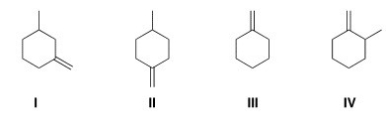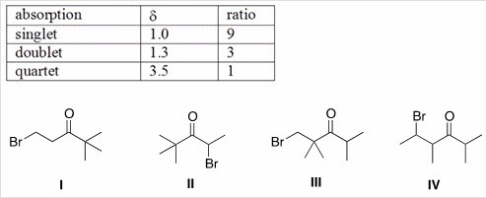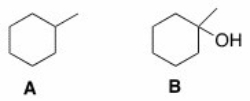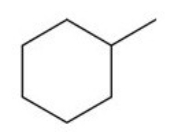A) A
B) B
C) C
D) D
Correct Answer

verified
Correct Answer
verified
Multiple Choice
Which of the following compounds would give rise to a 13C spectrum with 6 peaks? 
A) I
B) II
C) III
D) IV
Correct Answer

verified
Correct Answer
verified
Multiple Choice
What effect does increasing the operating frequency of a 1H NMR spectrum have on the magnitude of a coupling constant J in Hz?
A) Magnitude of coupling constant J in Hz will also increase.
B) Magnitude of coupling constant J in Hz will decrease.
C) Magnitude of coupling constant J in Hz will remain the same.
D) It is not possible to predict the change in the magnitude of coupling constant J in Hz.
Correct Answer

verified
Correct Answer
verified
Multiple Choice
An unknown compound X has the molecular formula C7H13OBr.Compound X shows a strong peak in its IR spectrum at 1700 cm-1.The 1H NMR spectral data of compound X is given below.What is the structure of compound X? 
A) I
B) II
C) III
D) IV
Correct Answer

verified
Correct Answer
verified
Multiple Choice
How many different kinds of protons are present in each of the following molecules? 
A) I = 6; II = 3; III = 4
B) I = 5; II = 3; III = 4
C) I = 6; II = 4; III = 5
D) I = 6; II = 4; III = 4
Correct Answer

verified
Correct Answer
verified
Multiple Choice
How many unique protons are present in each of the following compounds? 
A) I = 6; II = 3; III = 6
B) I = 5; II = 4; III = 6
C) I = 6,II = 4,III = 4
D) I = 6; II = 4; III = 6
Correct Answer

verified
Correct Answer
verified
Multiple Choice
Into how many peaks will each of the circled protons be split? (Assume complete resolution of all NMR peaks is possible) 
A) I = 3; II = 8; III = 1; IV = 4; V = 3
B) I = 9; II = 8; III = 2; IV = 4; V = 4
C) I = 4; II = 8; III = 2; IV = 4; V = 5
D) I = 4; Ii = 7; III = 2; IV = 4; V = 3
Correct Answer

verified
Correct Answer
verified
Multiple Choice
How could spectroscopy be used to distinguish between the following compounds? 
A) Compound A has a triplet in its 1H NMR spectrum at 1.0 ppm.
B) Compound B has a peak at 3200-3500 cm-1 in its IR spectrum.
C) Compound A has a peak in its IR spectrum at 2900 cm-1.
D) Compound A has a triplet in its 1H NMR spectrum at 1.0 ppm and compound B has a peak at 3200-3500 cm-1 in its IR spectrum.
Correct Answer

verified
Correct Answer
verified
Multiple Choice
What region of the electromagnetic spectrum does nuclear magnet resonance spectroscopy use?
A) Radio frequency
B) Microwave frequency
C) Infrared frequency
D) Visible frequency
E) Ultraviolet frequency
Correct Answer

verified
Correct Answer
verified
Multiple Choice
How many different kinds of 13C peaks will be seen? 
A) 2
B) 3
C) 4
D) 5
Correct Answer

verified
Correct Answer
verified
Multiple Choice
How many peaks would be observed for each of the circled protons in the compounds below? 
A) I = 6; II = 2; III = 3
B) I = 7; II = 3; III = 3
C) I = 7; II = 1; III = 3
D) I = 7; II = 2; III = 3
Correct Answer

verified
Correct Answer
verified
Showing 41 - 51 of 51
Related Exams